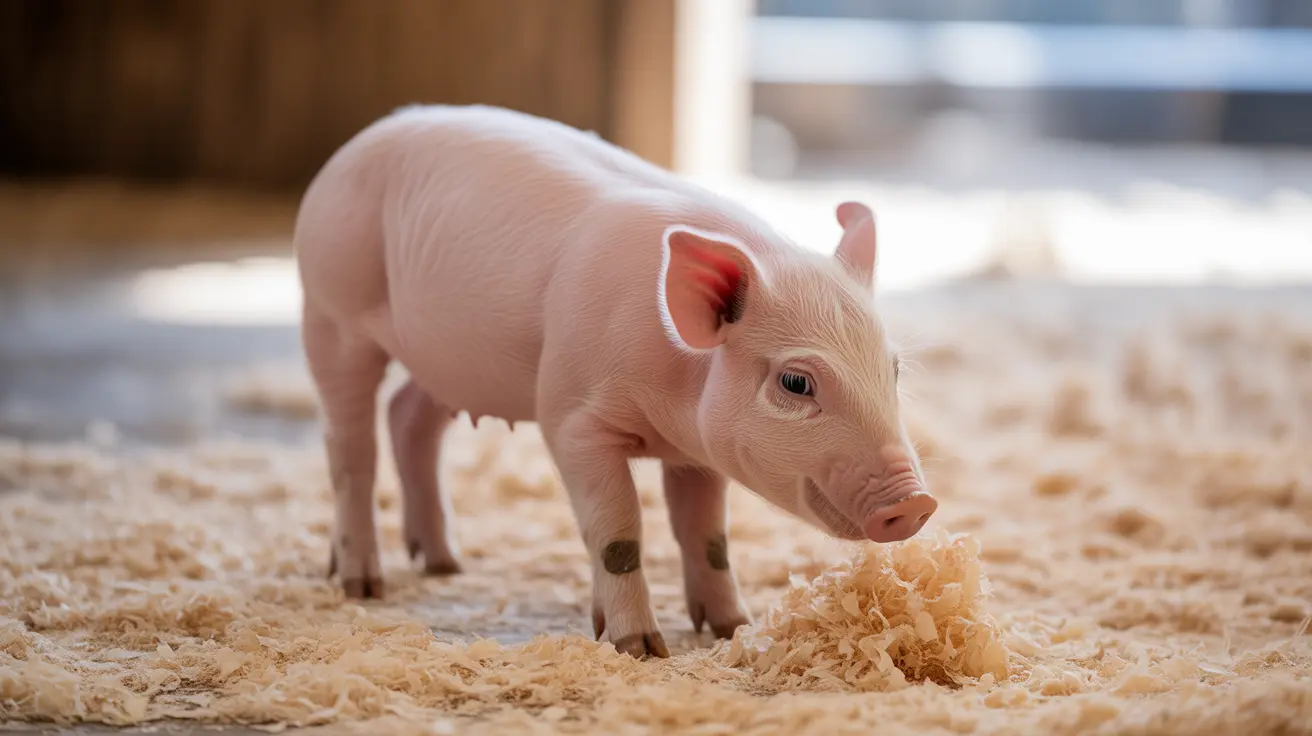Best High-Meat Dog Food: Complete Guide to Premium Protein Nutrition for Your Pet
Finding the best high-meat dog food for your canine companion can feel overwhelming with countless options flooding the market. As dog owners increasingly recognize the importance of quality nutrition, high-meat diets have gained tremendous popularity for their ability to mirror dogs' ancestral eating patterns while providing superior protein content. However, selecting the right high-meat dog food requires understanding more than just protein percentages – it demands knowledge of balanced nutrition, quality sourcing, and your individual dog's specific needs.
This comprehensive guide will walk you through everything you need to know about high-meat dog foods, from understanding different food categories to identifying quality meat sources and avoiding harmful ingredients. Whether you're considering dry kibble, wet food, raw diets, or organic options, you'll discover how to make informed decisions that prioritize both meat content and nutritional balance for optimal canine health.
Understanding High-Meat Dog Food Categories
Dry High-Meat Dog Foods
Dry dog food represents the most popular and convenient option for pet owners, though it typically contains lower meat content compared to wet alternatives. Despite this limitation, several premium brands have developed high-meat dry formulations that provide excellent nutrition while maintaining the practical benefits of kibble. Brands like Wolfsblut and Edgard & Cooper have created dry foods with impressive meat content that doesn't compromise on balanced nutrition.
The advantages of dry high-meat dog food extend beyond convenience. These products offer extended shelf life without refrigeration, cost-effectiveness for long-term feeding, and the dental benefits of chewing action that helps reduce tartar buildup. The kibble texture also provides mental stimulation for dogs who enjoy the crunching sensation during meals.
Wet High-Meat Dog Foods
Wet dog foods naturally contain higher meat content than their dry counterparts, making them an excellent choice for owners prioritizing protein-rich nutrition. Premium brands like Terra Canis offer wet formulations containing up to 97% meat content, providing exceptional protein density that closely mimics natural canine dietary preferences.
These high-moisture foods prove particularly beneficial for picky eaters, senior dogs with dental issues, or dogs who struggle to maintain adequate hydration. The soft texture and intense meat flavors make wet foods highly palatable, while the higher water content supports kidney function and overall hydration levels.
BARF (Biologically Appropriate Raw Food) Diets
BARF feeding allows the most precise control over meat portions, with experts recommending approximately 70% meat content for optimal nutrition. This raw feeding approach enables pet owners to customize their dog's diet with fresh, unprocessed meats while maintaining complete nutritional control over every ingredient.
However, BARF diets require careful nutrient balancing to prevent deficiencies. Successful raw feeding demands understanding of canine nutritional requirements, proper food safety protocols, and often supplementation with vitamins, minerals, and other essential nutrients that might be lacking in a meat-only approach.
Identifying Quality Meat Sources and Certifications
Not all meat in dog food is created equal, making it crucial to understand how to identify high-quality protein sources. Premium dog foods specify the exact meat source – such as "deboned chicken," "grass-fed beef," or "wild-caught salmon" – rather than using vague terms like "meat meal" or "animal by-products." This transparency indicates better quality control and sourcing standards.
Look for certifications that verify meat quality and sourcing practices. USDA inspection seals, organic certifications, and human-grade designations provide additional assurance of quality standards. Brands that specify their meat sources' geographic origin and farming practices demonstrate transparency that typically correlates with higher quality products.
Regional sourcing often indicates fresher ingredients with shorter supply chains, reducing contamination risks and ensuring better nutritional preservation. Companies that maintain direct relationships with farmers and suppliers typically provide superior meat quality compared to those using generic meat meal suppliers.
The Science Behind Optimal Meat Content
While dogs' wolf ancestors consumed primarily meat supplemented with some plant matter, modern domestic dogs have evolved to require a more balanced approach to nutrition. Research indicates that dogs thrive on diets containing approximately 70% protein, which translates to substantial but not exclusive meat content.
However, focusing solely on meat percentage can be misleading. A dog food with 95% meat content might lack essential vitamins, minerals, fiber, and other nutrients crucial for long-term health. The best high-meat dog foods balance significant protein content with complementary ingredients that provide complete nutrition.
Quality matters more than quantity when evaluating meat content. A food with 60% high-quality, clearly sourced meat often provides superior nutrition compared to one with 80% low-grade meat meal. The digestibility, amino acid profile, and processing methods significantly impact the actual nutritional value your dog receives.
Nutritional Balance in High-Meat Diets
Feeding dogs exclusively high-meat diets without proper nutritional balance can lead to serious health complications. Common deficiencies include inadequate fiber for digestive health, insufficient calcium for bone development, and missing vitamins that support immune function and overall wellness.
The most successful high-meat dog foods incorporate complementary ingredients that enhance meat nutrition rather than dilute it. Quality carbohydrates like sweet potatoes provide energy and fiber, while fruits and vegetables contribute essential vitamins, minerals, and antioxidants. These additions create synergistic nutrition that supports optimal canine health.
Proper nutritional balance also considers your dog's life stage, activity level, and health status. Puppies require different nutrient ratios than senior dogs, while working dogs need more calories and protein than sedentary companions. The best high-meat dog foods offer formulations tailored to these specific requirements.
Organic and Sustainable High-Meat Options
Organic high-meat dog foods like those produced by Liebesgut emphasize ethical sourcing, regional ingredients, and humane farming practices while maintaining approximately 70% meat content. These products appeal to environmentally conscious pet owners who prioritize sustainability alongside nutrition.
Organic certification ensures that meat sources come from animals raised without antibiotics, growth hormones, or exposure to synthetic pesticides. This approach often results in cleaner, more nutritious meat that may provide health benefits beyond basic protein requirements.
Sustainable sourcing practices also consider environmental impact, animal welfare, and local economic support. While organic high-meat dog foods typically command premium pricing, many pet owners find the enhanced quality and ethical considerations justify the additional investment.
High-Meat Treats and Supplemental Nutrition
High-meat treats like M. Rütter Riegel, containing 95% meat content, provide excellent supplemental nutrition while satisfying dogs' natural desire for meat-based rewards. These products serve dual purposes as training incentives and nutritional supplements that complement regular meal feeding.
When selecting high-meat treats, apply the same quality standards used for primary dog food. Look for clearly identified meat sources, minimal processing, and absence of artificial preservatives or unnecessary additives. The best high-meat treats use single-protein sources, making them suitable for dogs with food sensitivities or allergies.
Consider treats as part of your dog's total daily nutrition rather than empty calories. High-quality meat treats can contribute meaningful protein and nutrients to your dog's diet when used appropriately and factored into overall caloric intake.
Avoiding Harmful Ingredients in Dog Food
Even the best high-meat dog foods can be compromised by problematic ingredients that trigger digestive issues or allergies. Common ingredients to avoid include milk, corn, wheat, sugar, and soy, which frequently cause digestive upset, inflammation, or allergic reactions in sensitive dogs.
Artificial preservatives, colors, and flavors provide no nutritional value while potentially causing adverse reactions. The highest quality high-meat dog foods rely on natural preservation methods and derive their palatability from quality meat content rather than artificial flavor enhancers.
Generic terms like "animal fat," "meat by-products," or "poultry meal" often indicate lower-quality ingredients that may contain unknown protein sources or undesirable animal parts. Premium high-meat dog foods specify exactly which animals and cuts are used in their formulations.
Transitioning to High-Meat Dog Food
Successfully transitioning your dog to a high-meat diet requires gradual introduction to prevent digestive upset. Start by mixing 25% of the new high-meat food with 75% of the current food for the first few days, then gradually increase the proportion of new food over 7-10 days until the transition is complete.
Monitor your dog closely during the transition period for signs of digestive discomfort, changes in stool quality, or behavioral differences. Some dogs adapt quickly to higher meat content, while others may need longer transition periods or different protein sources to achieve optimal results.
Consider consulting with your veterinarian before making significant dietary changes, especially if your dog has existing health conditions or food sensitivities. Professional guidance can help ensure the new high-meat diet meets your dog's specific nutritional requirements.
Customizing Meat Content for Individual Dogs
The ideal meat content varies based on your dog's breed, age, activity level, and health condition. Large, active breeds often thrive on higher meat content, while smaller, less active dogs might require more balanced formulations with moderate meat levels to prevent weight gain.
Senior dogs may benefit from easily digestible high-meat formulations that support muscle maintenance without overtaxing aging kidneys. Puppies need protein-rich foods for growth but also require specific nutrient ratios that might not be achieved through meat alone.
Dogs with specific health conditions such as kidney disease, heart conditions, or food allergies may require veterinary guidance to determine appropriate meat content and protein sources. Customization ensures optimal nutrition while addressing individual health needs.
Frequently Asked Questions
- What percentage of meat content should I look for in high-meat dog food?
The ideal meat content ranges between 60-70% for most dogs, providing substantial protein while leaving room for essential nutrients from other sources. Foods with meat content above 80% may lack important vitamins, minerals, and fiber unless specifically supplemented.
- Is high-meat dog food suitable for all dog breeds and ages?
While most dogs benefit from high-meat diets, individual requirements vary by breed, age, activity level, and health status. Puppies, senior dogs, and those with specific health conditions may need customized formulations. Consult your veterinarian for personalized recommendations.
- How can I tell if the meat in dog food is high quality?
Quality meat sources are clearly identified (like "deboned chicken" or "grass-fed beef") rather than using vague terms like "meat meal." Look for USDA inspection seals, organic certifications, and transparency about sourcing practices and geographic origin.
- Can I mix high-meat dry food with wet food for better nutrition?
Yes, combining high-meat dry and wet foods can provide benefits of both formats – the convenience and dental health benefits of kibble plus the higher meat content and palatability of wet food. Ensure the combination meets your dog's total daily nutritional requirements.
- Are there any risks associated with feeding exclusively high-meat diets?
Feeding only high-meat foods without proper nutritional balance can cause deficiencies in fiber, vitamins, minerals, and other essential nutrients. The best approach combines high meat content with complementary ingredients that provide complete nutrition.
- What ingredients should I avoid when choosing high-meat dog food?
Avoid milk, corn, wheat, sugar, and soy, which commonly cause digestive issues and allergies. Also steer clear of artificial preservatives, colors, flavors, and vague terms like "animal by-products" or "meat meal" without specific source identification.
- How long does it take to transition my dog to a new high-meat food?
Plan for a 7-10 day gradual transition, starting with 25% new food mixed with 75% current food, then gradually increasing the new food proportion. This gradual approach prevents digestive upset and allows your dog's system to adjust to the higher meat content.
Conclusion
Choosing the best high-meat dog food requires balancing protein content with complete nutrition, quality sourcing, and your individual dog's specific needs. While high meat content provides excellent nutrition that aligns with dogs' carnivorous heritage, the most successful approach combines substantial protein with complementary ingredients that ensure nutritional completeness.
Remember that quality matters more than quantity when evaluating meat content, and the best high-meat dog foods transparently identify their protein sources while meeting rigorous safety and nutritional standards. By avoiding harmful ingredients, considering your dog's individual requirements, and making gradual dietary transitions, you can successfully incorporate high-meat nutrition that supports your canine companion's health, vitality, and longevity throughout all life stages.






